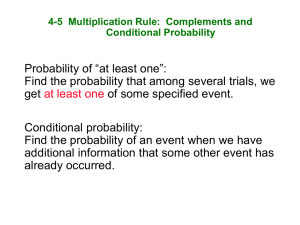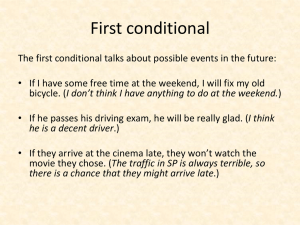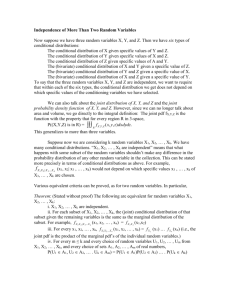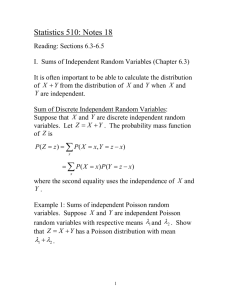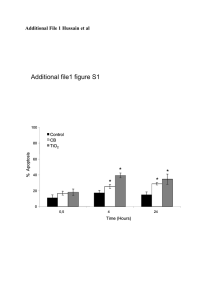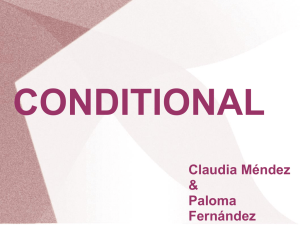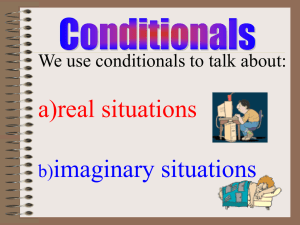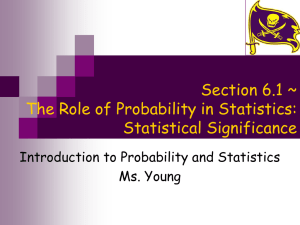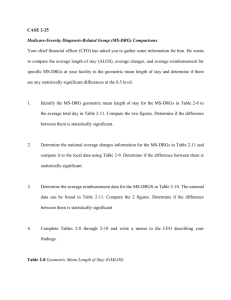Solutions
advertisement
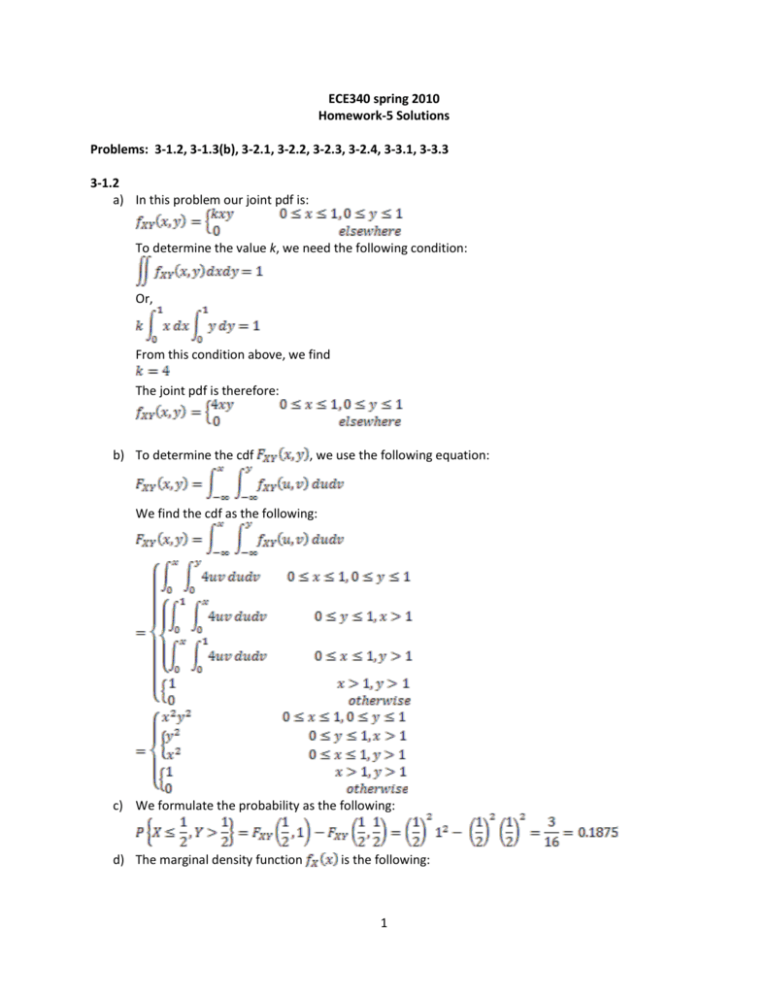
ECE340 spring 2010 Homework-5 Solutions Problems: 3-1.2, 3-1.3(b), 3-2.1, 3-2.2, 3-2.3, 3-2.4, 3-3.1, 3-3.3 3-1.2 a) In this problem our joint pdf is: To determine the value k, we need the following condition: Or, From this condition above, we find The joint pdf is therefore: b) To determine the cdf , we use the following equation: We find the cdf as the following: c) We formulate the probability as the following: d) The marginal density function is the following: 1 3-1.3 (b) For the random variables of Problem 3-1.2, the expected value of the product of X and Y is the following: 3-2.1 a) Since the signal X is Rayleigh distributed, we know the pdf of X as the following: Since the mean value of X is 10, according to the page 80, we have the following: So, we know Now, the pdf of signal X is the following: Now, the noise N is uniformly distributed, it is straightforward to find the pdf of N as the following: We also know that X and N are statistically independent and we have an observation as: Since we know that the conditional pdf Now, since N = Y – X, So we can write the conditional pdf as the following: Note that in our case, 2 The limits for x should be reflected in the integration the conditional pdf as the following: For the case when y =0, Now, For the case when y =6, For the case when y =12, 3 , so we can write b) If the observation yields a value of y = 12, we know from part 1 that: According to the book on page 127, the value of x for which is a maximum is a good estimate for the true value of X. So the value of x can be determined by equating the derivative (with respect to x) of the conditional pdf to zero: Or, We find the solution as the following: 3-2.2 a) The joint pdf of X and Y in problem 3-1.2 is the following: To find the conditional pdf we do the following: Since We need to find first, So now, b) By noticing that we can change x to y, and y to x in the joint pdf of X and Y, we get the result as the following: 4 3-2.3 A dc signal X has a uniform distribution over the range of -5V to +5V, then the pdf for r.v. X is as the following: Since the noise N is a Gaussian distributed with zero mean and variance of 2V2, we know the pdf for r.v. N is as the following: Where . a) Now, our observation is Y = X + N. The conditional pdf of the signal x given the value of measurement y is the following: So, b) When we have a measurement value 6 (X + N = Y = 6), The best estimate of x is 5 (not 6, sketch and verify this), because we have a constraint that . c) Same as part b) the best estimate of x is 5 V (also sketch and verify this). 3-2.4 a) The observation Y = X +N, where X is the random signal and N is the noise, we know the signal and the noise are independent. From the results we found in problem 3-2.1, we know the following: Where the joint pdf of X and Y are given as the following: 5 Now we can write: Now, our focus is to find the best estimate for X as a function of the observation Y = y, the best estimate is found by equation the following derivative to zero: Which is equivalent to solve x in the following equation: Since the denominator of has no x terms (whatever the value it is after the integration). Now our problem is simplified as finding the x in the following equation: So, given the observation Y = y, we have the best estimate of x such that x satisfies the following: Or, So, is our best estimate of X given observation Y = y. b) Now if the observed value of Y is y=3, the best estimate of X is -6. 3-3.1 To see whether two random variables are statistically independent, we need to check if the following is true: If two random variables are statistically independent, we can use the following to compute E[XY]: a) We use the following to find and : In this case 6 Where , if found by doing the following: So, Similarly we find: Now, we know So, the two random variables X and Y are statistically independent and, b) Following the same steps shown in part a), we found that So, X and Y are not statistically independent and, c) Following the same steps shown in part a), we found that 7 So, X and Y are statistically independent and, 3-3.3 Two independent r.v.s X and Y are both Gaussian distributed: Now So, 8


